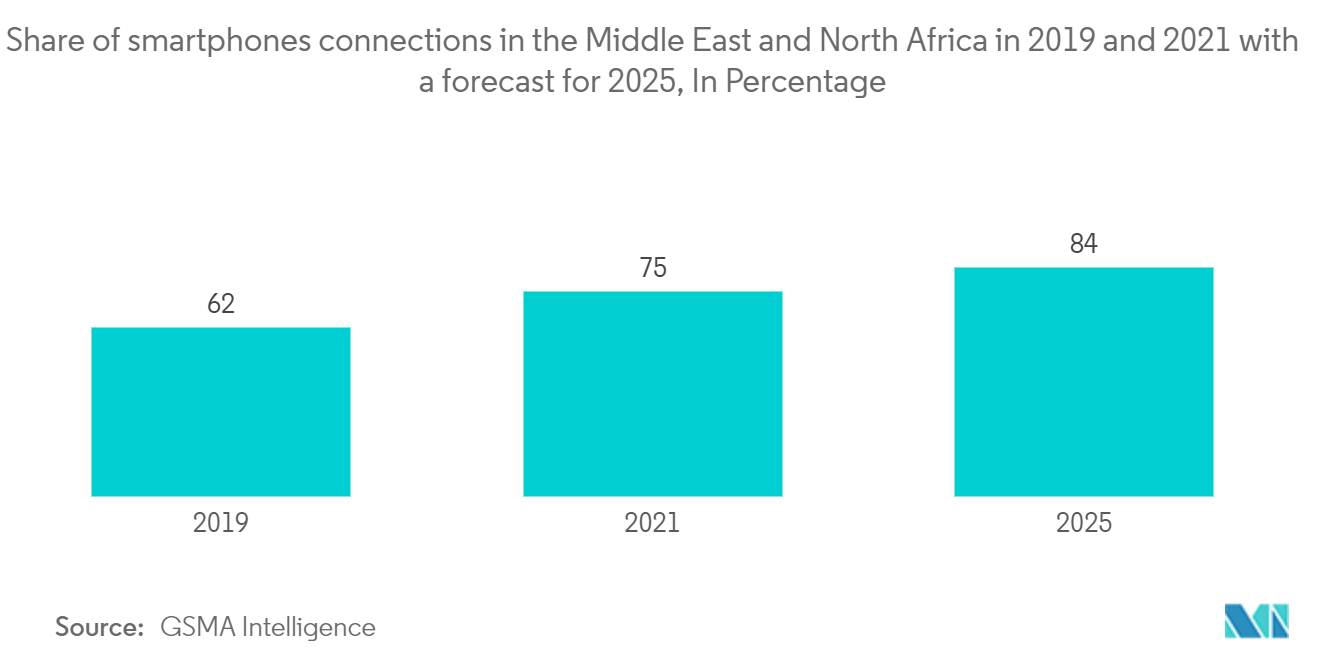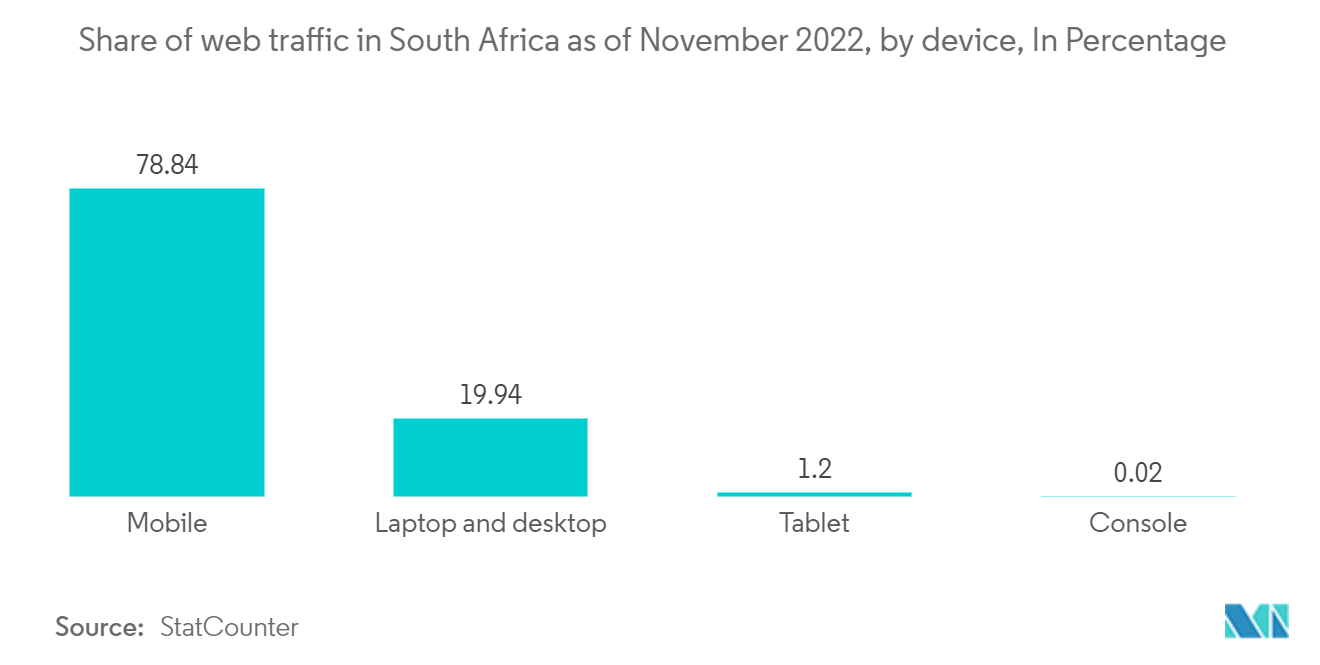Market Trends of Middle East and Africa IT Device Industry
This section covers the major market trends shaping the MEA IT Device Market according to our research experts:
Growing Demand for Smartphones
- The rapid rise in network coverage and mobile broadband service by operators is mainly attributed to the rising demand for smartphones in this area. According to GSMA, by 2025, the number of smartphone connections in the Middle East and North Africa (MENA) would surpass 500 million and demand more affordable devices.
- The MENA has the highest smartphone penetration rates in the GCC subregion, with nations like the United Arab Emirates reaching a rate of 99%. Users in the United Arab Emirates spend about six and a half hours each day using their cell phones. Other key smartphone markets in this region include North Africa, Turkey, and Israel.
- As per the GSMA report, smartphone adoption is expected to increase from 54% in 2018 to 74% in 2025 in the MENA region. Smartphones would make up 61% of all connections in Sub-Saharan Africa by 2025. Noticeably, the number of numbers 5G connections is expected to reach 45 million and 41 million by 2025 in the MENA and Sub-Saharan Africa regions, respectively. Thus, these 5G connections with faster internet access will rapidly enhance the demand for new 5 G-enabled handsets across the region.
- The growing smartphone use and data traffic will increase due to the popularity of online gaming. Over half of gaming income is expected to come from only mobile games. Consumers are expected to spend USD 7.2 billion on gaming this year, up 12.9% from last year, making the Middle East and Africa one of the most promising markets for investment.
- Various factors drive growth, including a youthful, tech-savvy populace who desire the newest technology and increased rivalry among phone manufacturers to release the most cutting-edge yet reasonably priced models to market. In August last year, the Chinese company Realme announced in Kenya that it would expand its research and development spending by 58% to create cutting-edge smartphone models with aesthetics that would appeal to youthful consumers throughout Africa.
- In the MENA, smartphones are expected to account for over 84% of all connections in 2025, up from 75% in 2021. By 2025, 107% of the people in the area are anticipated to have a sim connection.

South Africa Has a Significant Growth Potential
- The Southern Africa PC market, which includes desktops, notebooks, and tablets, achieved a robust performance during FY 2021 despite ongoing issues with the worldwide stock supply brought on by a lack of components and chipsets. The shipment in the market reached the highest in the last five years. This trend is expected to continue in the forecast period also.
- Due to massive corporate backlog orders, the continuance of work-from-home policies, and the expanding acceptance of education technology to promote eLearning, the Southern African PC market continued to witness a rise in demand, especially for mobile devices like notebooks and tablets. Additionally, the Southern African nations saw a little uptick in economic activity in the previous year's first half, with firms committing more money to IT purchases then.
- Among the major players in the PC market, HP Inc. and Lenovo held more than 23% market share each during H1 of last year. Dell Technologies held the third position with more than 16% market share, followed by Asus and others. In H1 last year, Samsung maintained its market dominance in the tablet segment. Vodacom and Apple held onto the third and fourth spots, respectively, while Lenovo came in second.
- Furthermore, nearly 20 to 22 million South Africans, or about one-third of the country's population, now use smartphones. Though feature phones are still commonly used in the nation and across the continent, the total number of mobile connections is far greater, at over 90 million. Up to the current year, there would be an expected figure of additional five million smartphone users in the country.
- In South Africa, Samsung is now the top mobile phone manufacturer. The Korean tech juggernaut today produces more than 40% of all gadgets. With a combined market share of more than 15%, the US-based company Apple and the Chinese maker of consumer electronics and telecoms gear Huawei have a significant presence in South Africa.
- With a significant market share of around 79% as of November last year, mobile devices dominated the market for internet access devices in South Africa. On the other hand, laptops and desktops accounted for almost 20% of the market from web traffic, while tablets and gaming consoles had the smallest shares, with only 1.2 and 0.02%, respectively.


